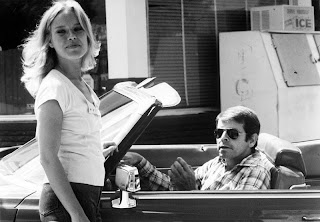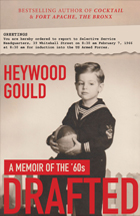Nightbird Publishers interviews Heywood Gould about his new book SERIAL KILLER’S DAUGHTER and about his life as a writer
PART 2
HOLLYWOOD
Will we be seeing another Heywood Gould project on the big screen soon?
Hope springs eternal. There’s been some early interest in SERIAL KILLER’S DAUGHTER.
Do you miss Hollywood and the director’s chair?
Yes. The best thing about directing is you’re not writing, but you have a good excuse. Also, a driver picks you up and takes you home. You have your own trailer where you can nap undisturbed. You’re allowed to cut the lunch line. The crew guys call you “sir,” and pretend to be impressed with everything you say. As a writer you’re an object of disdain. As a director you have the illusion of being in control. I can’t say enough terrible things about the movie business. How harshly you’re exploited. How your work is cheapened; by illiterates who take credit for your success and blame you for their failure. The way the valet parker somehow knows you’ve had a flop… But I would drop everything to make another movie. Any movie. Anywhere…
Who were some of your favorite actors you have worked with on your films?
The ones who knew their lines and did what they were told, which means the day players and character actors. It was fun watching the big stars at work. Peck, Olivier, Newman, Cruise—they really are larger than life. There were some who understood the script— Bill Devane, Elizabeth Shue, Brian Brown, Jon Seda, Rachel Ticotin. Richard Portnow, John Capodice, among others–and said the lines exactly the way I heard them in my head. In the beginning I would become frustrated when an actor’s portrayal didn’t match my conception. But, after a while I realized that the character changes from page to screen and an actor can rightfully claim ownership of the person he/she is playing. You hope for the best.
How does the process of writing a screenplay differ from the process of writing a novel?
A screenplay is the characters and the story. A novel is authorial presence, ideas, language.A novelist agonizes over every word. The screenwriter has a few automatics—“Interior, Exterior, Fade In, Dissolve To—and all-purpose phrases—“the car explodes,” “she moans with pleasure, “the wizard turns into a hissing dragon,” “Will Ferrell drops his pants” etc. A screenplay doesn’t require elaborate, eloquent scene setting, back story, insight …But that doesn’t make it easier to write. A screenplay that someone has labored months over will usually be read in one sitting over a Starbucks frappacino by a frazzled assistant who has to write reader’s reports on five more scripts by the end of the week. Most people in the movie business don’t know how to read a script so it has to be as novelistic as possible. The scene and character descriptions have to be vivid and concise. Some idea of the “attitude” of the movie is necessary, along with simple explanations of motivation and action. The entire script has to have a hypnotic pace that keeps the reader’s jaded attention. The novelist can learn from the brevity and focus of film dialogue. The screenwriter can learn from the airtight plotting of a good novel. Screenwriters should notice that most great movies were made from novels.
PERSONAL
You’ve lived on both east and west coasts, what do you like best about each?
In California you can go skiing in the morning and surfing in the afternoon. I did neither. In NYC you can you can hear great jazz and get mugged outside the club. I did both. In Cali some guy can decide you cut him off on the freeway and blow your brains out. In NYC the train you were taking to Brooklyn can end up in Queens, leaving you freezing in a crack war zone waiting for the shuttle that never comes. The weather’s not so great in Cali. New Yorkers aren’t half as smart as they think they are. I lived in Cali for nineteen years and never went to the beach. I was born in NYC and have never been to the Statue of Liberty or the top of the Empire State Building. The Mexican food is better in Cali. The Italian food is better in NYC. In NYC the literati can decide you’re just a hack. In LA the whole town can suddenly decide —as if someone sent out an e-mail blast– that you’re not bankable. You pick your poison.
Who inspires you?
James Joyce, who went days without eating. It took him years to find a publisher for “Dubliners,” and then the printer refused to print it because it had a few “bloody”s in it. Fitzgerald who died broke in Hollywood convinced he was a failure. The Russian writers– censored, exiled, murdered. The contemporary Chinese writers– muzzled. The Cuban poet who was imprisoned for twenty years. All I have to whine about is some editor/producer/critic/reader who doesn’t understand how great I am. And boy do I whine.
Tell us about your military experiences. It’s well known you were a reluctant warrior during the Vietnam conflict. How did you end up being drafted? What kind of action did you see? Did that experience shape your storytelling in any way?
I’m working on a short book of comic (I hope) memoirs about being drafted. The world will have to wait with bated breath.
What do you like to do when you’re not writing?
Sit around and beat myself up for not writing.
If you weren’t an author, what would you be?
A very bitter person in a job I hated. Although lately I’ve been thinking I might like to raise goats.

